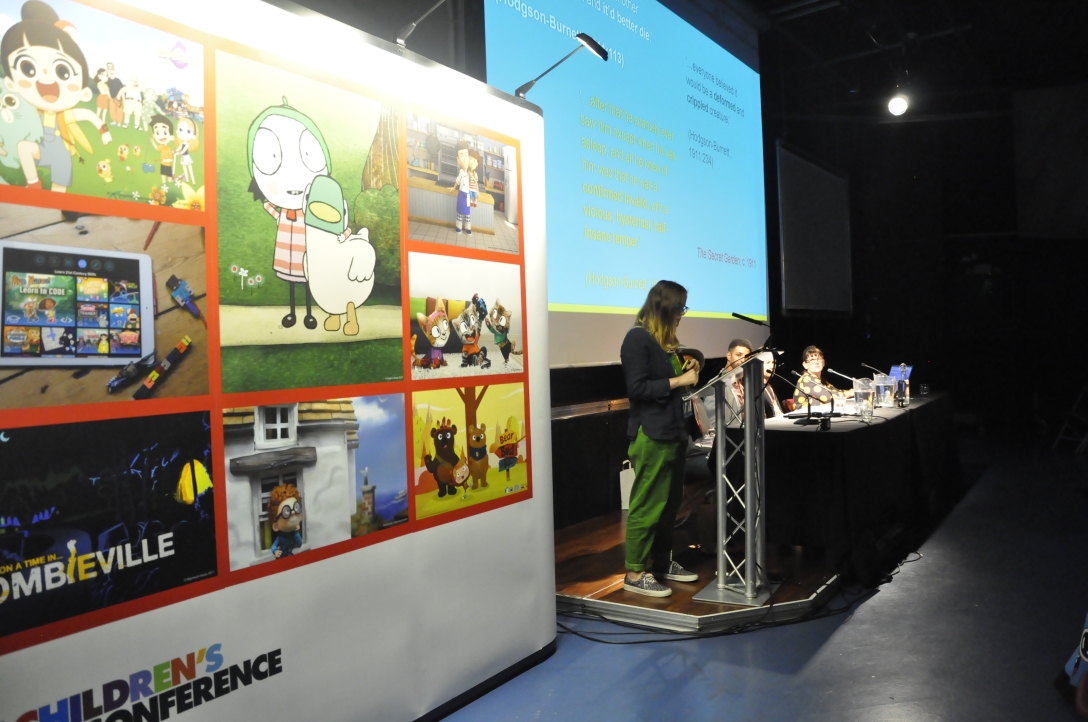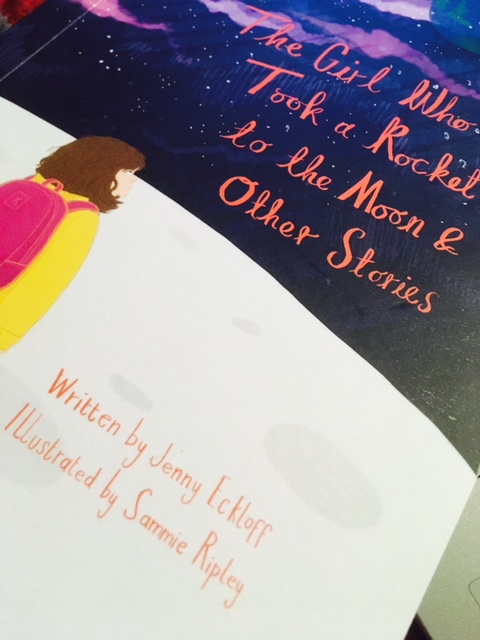Earlier this year, I was fortunate enough to speak at the Children’s Media Conference on behalf of Inclusive Minds. I used this opportunity to discuss the importance of authentic representation in literature. This is something I am incredibly passionate about, having studied literature at university, and this event gave me the opportunity to speak with like-minded individuals working in the media.
I just wanted to share the transcript of my talk with you. I hope you enjoy learning a bit more about my motivations for disability advocacy and campaigning and the profound effect representation can have on validating and acknowledging an individuals’ differerences.

Disabled, Diverse and Talented: Media, What Are You Waiting For?
Diversity: it’s the word on everyone’s lips right now. And – whether you like it or not – the word is well and truly here to stay. Employers are asked to make sure their workforces are diverse; creatives are reminded that their content is diverse, and, perhaps more importantly, that it can be accessed by a diverse audience. As the field of disability rights becomes more and more prevalent, and as more people are finally becoming aware of the ableism and disablism that disabled people are subjected to, diversity is becoming an integral part of everyday conversation. So, that begs the question: as media professionals, what’s in it for you?
A story I often tell at events like these is a very personal one, focused on my own experiences of university studying English Literature. I’ve always been an avid reader, so a degree that consisted of hours and hours of reading seemed rather apt. I’ve always found books fascinating: I was captivated by the way that narratives were so carefully crafted and interwoven, and the ways in which such intimate expressions of the human experience can be portrayed through words alone. During my second year, I chose to take an extremely popular module called ‘Classics of British Children’s Literature’. I was expecting this – probably naively – to be a nostalgic trip down memory lane, but instead, it completely changed the course of my studies. We were asked to read Hodgson-Burnett’s The Secret Garden, something I was aware of during my childhood but not something I really ever read; or at least it wasn’t anything that really had an effect on me. I remember – incredibly vividly – sat in the newly-refurbished Brynmor Jones Library and stumbling across the following: ‘…he is a hunchback…[and] it is horrid,’. What I haven’t mentioned yet, which is very integral to my story, is that at the age of 13 I was diagnosed with Scheuermann’s Kyphosis, and I remember the words thay came out of the consultant’s mouth on that fateful day: ‘You have vertebral deformity…a hunchback, if you will,’. This, alongside my pre-existing form of cerebral palsy came as a real blow to me. Stumbling upon those lines brought that familiar sinking feeling washing over me. My cheeks flushed red. I felt a deep-seated shame emanate from the pit of my stomach: those days stood in front of the floor-length mirror trying to desperately straighten my back to no avail. For a long time, I hated the way my back looked, and amongst those pages, those words really hurt. what was worse about this, was that when I came to discuss my issues surrounding this book in the seminar that week, no one really batted an eyelid. Whilst I accepted that the book was written for early 20th century readers, I found it hard to accept that my concerns were not being addressed by my lecturer in 21st century Britain.
It’s said that there is no friend as loyal as a book, but right there and then, I felt betrayed by one of the things I loved the most. I’d worked for a long time to get to a place where I was comfortable and happy with my body’s differences and appearance. But those words spoke loudly to that internalised ableism I’d carried around with me for years, something shared by the majority of the disabled population. After my experience in that seminar, I made it a mission of mine to search out for more accurate representations of people like me. I wanted to find characters in pages and on stages that had disabilities and lived their lives in either ordinary – or extraordinary – ways. Maybe they were embroiled in a dramatic family saga, or went on fantastic adventures. Where were the protagonists who got up and lived their lives embracing their disability rather than following the typical narrative trope of bitter and twisted individuals desperate to be cured?

We all know that media is one of the most powerful forces in the world. I’m sure most of you attending Children’s Media Conference are here because you are creative individuals with grand ideas and a view of changing the world, no matter how small. You strive to create a world of fun, education and interest for children. You know how much your creations have the ability to impact upon young children’s lives. You work to harness that spark of imagination within individuals’ eyes, and want to watch it grow into a fire roaring with enthusiasm and excitement. We all know that there is nothing more validating than seeing a reflection of your true self – differences and all – captured through the written word or lit up on a television screen. It paints a picture and conveys a message that says that you matter, you are worthy, and that, most importantly, your life and experiences matter. Nothing quite beats that.
This experience was perhaps the main catalyst for commencing a Master of Research postgraduate degree where I made it my goal to uncover lesser-known literary portrayals of disability that were more true-to-life and accurate in their manifestations. Imagine my joy, then, when I came across Emma Henderson’s protagonist Grace Williams, a girl with the same type of hemiplegia as me and a spinal curvature alongside it.
Behind the scenes and screens is a good place to start cultivating these characters and representations that have the power to bring so much validation and happiness to children and young people. I do not think it’s a prerequisite to have direct experience of each of the many facets of diversity to render it into media, but we need to acknowledge that consulting those with real, lived experience adds authenticity and insight to your creations. When you employ a disabled person, and ask them for their honesty and opinion with regard to ascertaining an accurate representation of their lives, you are unlocking a plethora of knowledge, which – when transferred and translated into whatever you’re creating – has the ability to validate the lives of thousands, if not millions, of individuals.

Now is a good a time as any to make truly positive changes, and in turn to shape perceptions and enrich the minds and lives of children and young people. I longed for characters to be like me when I was growing up, but they never materialised. However, organisations like Inclusive Minds – for which I am an Inclusion Ambassador – gives authors, publishers, agents and other creatives the opportunity to find out more about the lives experience of under-represented individuals, can help make this positive change a reality.
I know your work is devoted to making children’s lives richer by whatever means possible. You truly have the ability to enact real, meaningful change in your fields.











